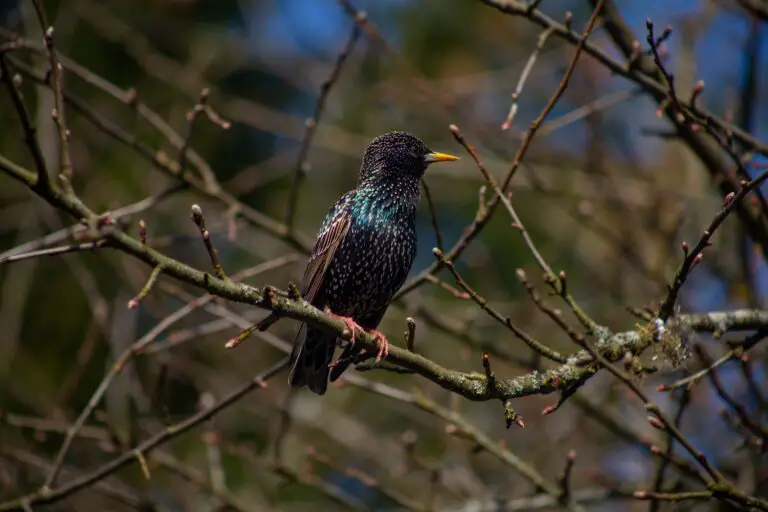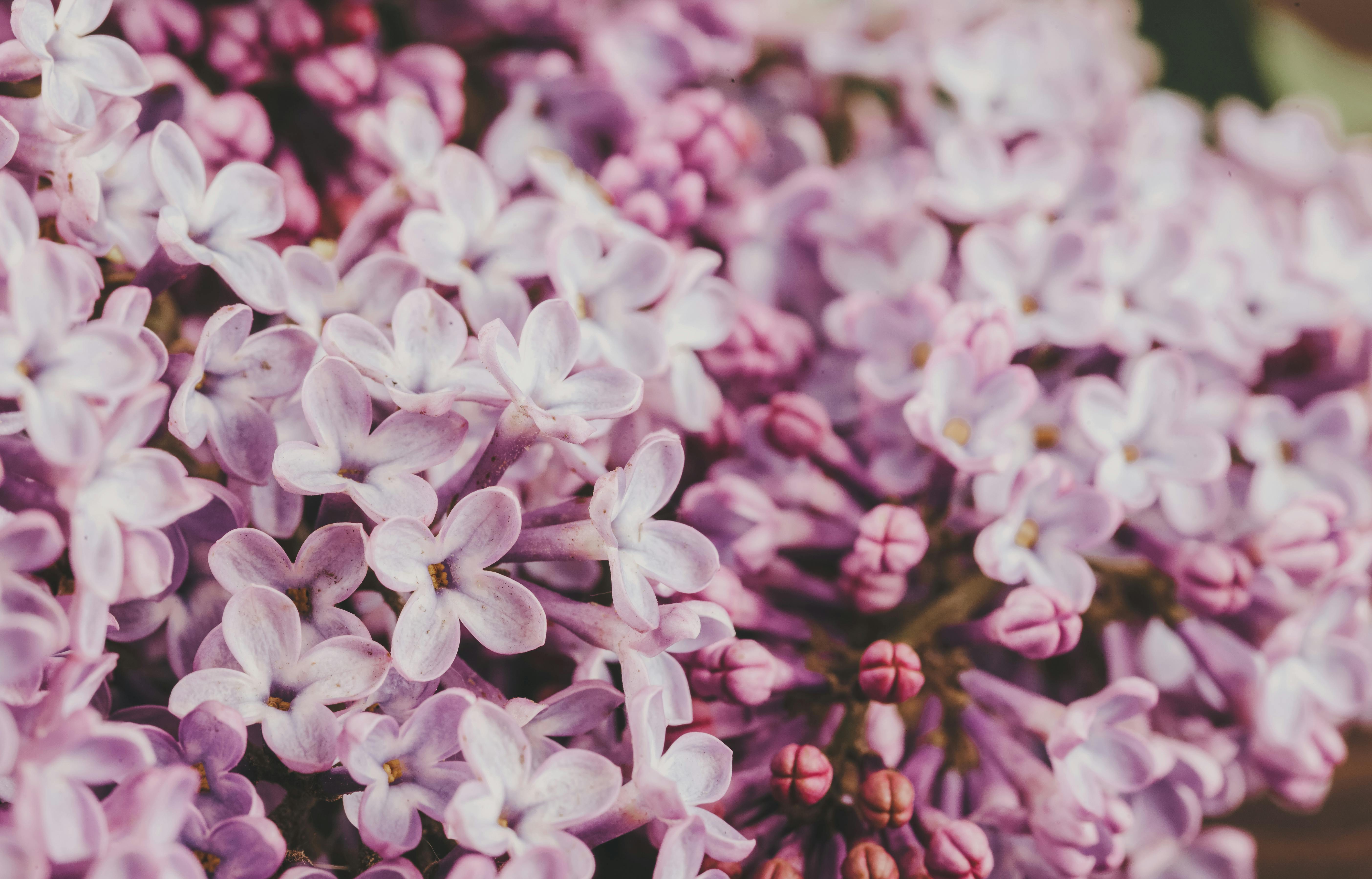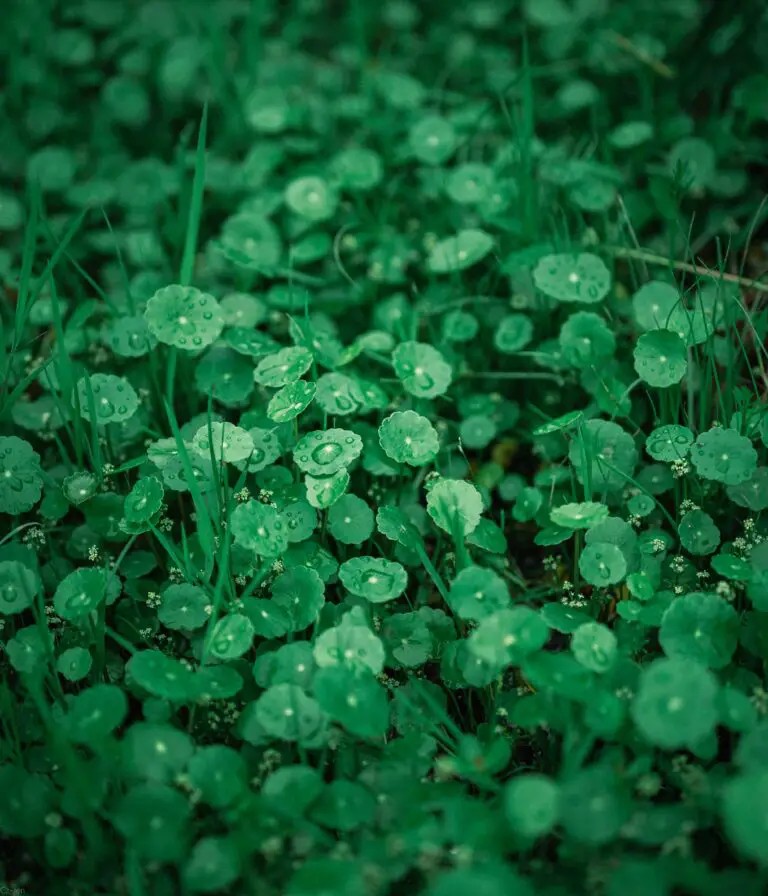Introduction to Senecio Vulgaris
Meet the unassuming hero of green spaces, Senecio vulgaris, or as many would recognize it, the common groundsel. A plant so ordinary by sight, yet its ubiquity in various ecosystems cannot be overstated. Often overlooked, these green warriors grace the countryside to urban sprawl with their feathery presence. Clusters of its humble, yellow-crowned flowers peek through sidewalk cracks, asserting their resilience in the face of adversity.
Juxtaposed against the kaleidoscope of nature, Senecio vulgaris sports a modest wardrobe: rosettes of spoon-shaped leaves, toothed at the edges and every bit as pragmatic. In bloom, it flaunts petite daisy-like flower heads, each a painter’s modest dab of white and yellow. The botanical tapestry weaves together little whispers of green from the continent’s garden beds to the fence lines of far-reaching meadows.

As part of nature’s intricate puzzle, the common groundsel, despite its seemingly inconspicuous stance, plays a pivotal role in supporting biodiversity. These versatile plants offer more than meets the eye, providing nourishment for pollinators and a living sanctuary for creatures thirsting for a haven within our own backyards. They remind us that even the most ordinary of flora can lay the foundation for life to thrive.
“`html
Ecology and Habitat
Ever wondered where the tenacious Senecio vulgaris, or common groundsel, finds its home? Let’s zoom into the world of this ubiquitous plant, a master of adaptation and a player in the ecological chess game. Preferring the company of disturbance, the common groundsel thrives in areas that most would describe as rough around the edges—agricultural fields, roadsides, even the untamed urban jungle. Its secret? An ability to adjust its green sails to the winds of diverse environmental conditions.
Imagine walking through a city park, and there it is, the humble groundsel, nestled comfortably between the cracks of a walkway, basking in the filtered sunlight. It doesn’t ask for much—a sliver of space, a whisper of water—and yet, it dominates these micro-habitats with a quiet resilience. This adaptability isn’t just limited to urban settings. Senecio vulgaris has a way of cropping up in coastal areas, outcompeting some less hardy native plants, subtly altering the tapestry of local flora. It’s as though nature drafted it specifically for the role of ecological opportunist.

Our little green friend’s ecological impact doesn’t stop at the advance of its leaves. It’s a staging area for a troupe of insects and a menu item for others, participating in an intricate dance of life. The presence of groundsel can signal changes in the biodiversity of an area, shuffling the deck of the local ecosystem. It’s a story of give and take, where Senecio vulgaris gives shelter but takes space. Yet, through this push and pull, new ecological stories unfold—stories of adaptation, survival, and interdependence.
For more information on the ecological nuances of Senecio vulgaris, delve into fascinating research that teases apart its influence on seed longevity and seedling emergence.
While we cannot offer an inside look through our internal archives on this particular aspect of Senecio vulgaris, we encourage the curious mind to explore the world of weeds further through our diverse range of articles that touch on the various impacts of invasive species.
“`
Identification and Characteristics
Have you ever strolled through your garden or local park and spotted a plant that seems to pop up everywhere, subtly blending into the green tapestry? Perhaps you’ve met Senecio vulgaris, commonly known as the common groundsel. This plant has a talent for being inconspicuous yet prolific, making it a master of undercover ubiquity in various ecosystems.
Let’s don your detective hat and unravel the mystery of identifying this green enigma. Senecio vulgaris has a distinctive look, if you know what to eyeball. The leaves, to start with, are ruffled and lobed, often reminiscent of an artist’s sporadic brush strokes. They have a slightly succulent feel, presenting a ragged appearance with a toothed edge that seems as though it could tell a story or two about survival in the wild.

Speaking of survival, the plant’s flowers, while not the flamboyant show-stoppers of the floral world, are still noteworthy. They are tiny, compact, and yellow, often clustering at the top of the plant like a miniature crown of gold. The growth pattern of Senecio vulgaris is another clue in its identification. It grows expeditiously, shooting up to heights that range from 10 to 60 cm, all the while flourishing in disturbed soils where few others dare to tread.
Sometimes, you might confuse it with its more well-behaved cousins, but unlike them, common groundsel is a bit of a rebel. It doesn’t stay put in well-manicured garden beds. Instead, it prefers the wilder, untamed edges of nature, sneaking into your garden party only to shake things up a touch. And don’t even get us started on its seeds – they’re the ultimate voyageurs, equipped with a pappus, parachuting into new territories with the slightest gust of wind.
For those looking to elevate their green spaces, exploring the correct soil for your plants is vital, ensuring each botanical buddy you introduce into your garden thrives with the care and environment best suited for it. Senecio vulgaris might just surprise you with how well it adapts and persists!
So, next time you’re admiring nature’s greenery, give a little nod to Senecio vulgaris – a plant that doesn’t demand the spotlight but plays a remarkable role in sustaining the biodiversity of our lush yet delicate ecosystems.
Propagation and Growth Cycle
Unraveling the secrets of the Senecio vulgaris, also known as the common groundsel, is like peeling back the layers of an onion. Each layer reveals a fascinating facet of its existence, pulling us deeper into the wonder of this unassuming but ecologically significant plant. A deep dive into its life story offers insight into not just the plant, but the ecosystem it thrives in.
Picture this: a mild breeze on a warm spring morning, just enough to tousle the hair and sway the topmost branches of trees. Amongst the undisturbed soil, a battalion of tiny seeds from the previous year’s groundsel plants begins their march towards sunlight. These are no ordinary seeds; they are equipped with parachutes of sorts, airy pappi that harness the wind, aiding in an aerial ballet to new locations. This is the groundsel’s masterful strategy for seed dispersal, a critical phase in their propagation that ensures their legacy endures far and wide.
But it’s not just the wind that these cosmopolitan voyagers rely on. Humans, too, unwittingly become couriers for these botanical hitchhikers. Seeds cling to shoes, clothes, and machinery, finding new ground on which to germinate. This prolific spread is key to the groundsel’s reputation as a hearty survivor, taking hold in gardens, farm fields, and disturbed lands alike.
In their chosen haven, Senecio vulgaris wastes no time. With a growth cycle that seems to mock the more lethargic pace of other plants, groundsel can sprout, bloom, and set seed in a mere five to six weeks under favorable conditions. A single plant can produce thousands of seeds, and in mild climates, several generations can succeed one another in a single year. This quick turnaround is a testament to the groundsel’s ability to adapt and seize opportunity.
And what are those conditions that promote such vigorous growth? Groundsel isn’t picky, which is partly why it’s so widespread. It loves nitrogen-rich soils—a common condition in human-altered environments—but isn’t above sprouting in poorer soils. Yet, curiously, it thrives in areas we humans often disturb: our gardens, our fields, and our construction sites. Have we created the perfect stage for this opportunistic actor? It would seem so, as the groundsel emerges time and again where Earth has been turned and nutrients are brought to the surface.
Now, for a moment, absorb yourself in the visual journey of Senecio vulgaris propagation with this video:
Each stem, each leaf of the common groundsel stand as nature’s testament to effective survival strategies. Its lifecycle is not just a botanical profile but a narrative of resilience and efficiency. That said, while the groundsel’s acceleration through its life stages is extraordinary, it is also a reminder of the delicate balance that exists in ecosystems and our role in shaping them. Our narrative is intertwined with that of the Senecio vulgaris, and understanding its life is a key to understanding the larger ecological story in which we all share a chapter.
Managing Senecio Vulgaris
When it comes to dealing with the wily invader known as Senecio vulgaris, or the common groundsel, the task often feels like a strategic game of cat and mouse. In agricultural land, the persistent weed slips through the crops, hiding beneath their shadows, daring farmers to come forth with a battle plan. Within the realm of gardens, it’s the uninvited guest that just keeps popping up unannounced, challenging green thumbs at every turn. Enter the natural landscapes, and Senecio vulgaris assumes the role of the quiet conqueror, slowly yet effectively asserting its dominance.
The struggle is real, but so are the solutions. Managing Senecio vulgaris requires a multifaceted approach that combines the wits of modern science with the wisdom of natural practices. On the chemical front, herbicides present a quick fix—a precision strike to impede the growth of these opportunistic plants. However, such a method is not without its risks. Runoff from chemical treatments can create a ripple effect, unbalancing ecosystems and harming non-targeted species.
Thankfully, nature has its own control room. Biological warriors, in the form of insects and fungi, are recruited to keep the groundsel at bay. In agricultural settings, farmers might observe the Flea Beetle, its appetite for the groundsel’s leaves making it a valuable ally in the fight for crop dominance. In gardens, the introduction of microbial fungicides can tip the scale, setting the stage for a natural takedown of our green adversary.
It’s not all about offense, though; defense is just as critical. Cultivation practices such as crop rotation, cover cropping, and timely tilling disrupt the habitat that Senecio vulgaris so loves to exploit. By alternating plantings and keeping the soil on its metaphorical toes, the groundsel’s spread can be curtailed, thereby safeguarding our agricultural gold.
Imagine a local community garden, once teeming with the pesky groundsel, now standing as a testament to the power of perseverance and strategic management. With the combined forces of targeted chemical use, biological control, and smart cultivation, victory over Senecio vulgaris is not just a dream—it’s a tangible reality, one that keeps both the crops and the ecosystems around them thriving.
But let’s not forget the all-important human element in this saga. Education and awareness among farmers and gardeners create a formidable frontline against the proliferation of this common weed. Knowing the enemy, its habits and preferences, allows for targeted action, nipping the possibility of a groundsel takeover in the bud, quite literally.

The battle against Senecio vulgaris may be persistent, but with the right blend of tactics, the tide is turning, leading to healthier crops, lush gardens, and natural environments free from the chokehold of the common groundsel.
Senecio Vulgaris and Human Health
When we delve into the world of flora, few plant species stir up quite the mix of fascination and concern as Senecio vulgaris, commonly known as the Common Groundsel. It’s a plant that most gardeners and farmers love to hate, but few realize the intricate dance it performs within the ecosystem, impacting not only our green spaces but our health too.
Picture this: a field speckled with the innocuous, dainty yellow flowers of the Common Groundsel. It’s a pastoral scene, but beneath the petals lie secrets to this plant’s dual nature. Groundsel harbors properties that are both potentially beneficial and harmful to human health. Let’s unpack this botanical enigma.

Traditionally, ‘healer’ and ‘harm’ aren’t two words you’d find cozying up together, yet Senecio vulgaris has historically tiptoed this very line. In the annals of folk medicine, the plant was sometimes employed for its supposed curative properties. Fast forward to today’s scientific scrutiny, and we’ve unveiled a more cautionary tale: the plant contains toxic alkaloids that could spell trouble, particularly for the liver.
The Groundsel’s Toxic Gambit
The reality is, the Groundsel is not here to play games. Its toxic compounds have been linked to cases of poisoning in livestock, a sobering reminder of the plant’s potent chemical arsenal. Imagine a herd of cattle, grazing nonchalantly, unwittingly ingesting these toxins. The consequences can range from weight loss to severe liver damage, a dire reminder that not all green is good.
Nature’s Double-Edged Sword
Yet, like a coin with two sides, traditional narratives sometimes attribute medicinal qualities to Senecio vulgaris. Historical texts whisper of its use against conditions as varied as fevers and bites. However, in the modern pharmacopeial lexicon, ‘medicinal’ is a term we now apply to Groundsel with the utmost caution, if at all, given its known toxicology.
As we navigate the dichotomy of Groundsel’s relationship with human health, it’s clear that this common weed is anything but simple. It stands as a testament to the complexities of nature and the importance of understanding the multifaceted roles that plants can play in our ecosystem and our well-being. Just like the farmers vigilant of the Groundsel’s unwelcome presence in their fields, we too must be aware of the fine line between nature’s remedies and its poisons.
Conservation and Environmental Concerns
When it comes to balancing ecosystems, Senecio vulgaris, commonly known as common groundsel, plays a nuanced role. Thriving in disturbed soils, this unassuming plant can be seen as both an opportunistic pioneer and an invasive nuisance. Its impact on biodiversity is a tale of two stories: one where it supports local wildlife, and the other where it overwhelms and displaces native flora.
Consider the British countryside, where common groundsel nonchalantly settles in, its presence often unnoticed amidst the agricultural landscape. Here, it serves as a vital food source for the cinnabar moth caterpillar, a relationship that exemplifies the plant’s contribution to native biodiversity. However, shift the scene to North America, and the story morphs—one where its rapid spread through farms, gardens, and open fields raises alarm bells for environmental conservationists.

In regions where Senecio vulgaris is considered invasive, it stands as a challenge to maintenance of local biodiversity. It competes with endemic plants, sometimes edging them out of their own habitats. This competition can alter the food sources and habitats for a variety of animal species, effectively reshaping entire ecosystems. Dedicated conservation efforts, such as those outlined by the National Invasive Species Information Center, focus on educating the public and promoting strategies to manage and control invasive plants like common groundsel.
Effective management often requires a multi-pronged approach: spreading awareness, manual removal, and in some cases, the release of biological controls. It’s about finding the equilibrium where vulnerable ecosystems are safeguarded without entirely eradicating a plant that, in the right context, has its own role to play. As we look to the future, our challenge is to support a symbiosis where both native and non-native species contribute to the richness and resilience of our natural world.
FAQs About Senecio Vulgaris
When it comes to weeds, few are as tenacious as Senecio vulgaris, more commonly known as the common groundsel. Let’s dig into the root of the most pressing questions surrounding this persistent plant.
Is Senecio Vulgaris Legal?
Depending on where you’ve planted your feet on the globe, the legality of Senecio vulgaris varies. In some regions, this plant is listed as an invasive species, leading to strict control measures, while in other areas, it’s merely regarded as a common weed with no legal restrictions. Picture your serene backyard garden turning into a battleground – with local regulations either raising a white flag or demanding an all-out removal of the green intruder. Imagine a group of community volunteers, armed with gloves and garden trowels, on a sunny Saturday morning, embarking on a ‘groundsel busting mission’ – an example of regulations in action!
Best Practices for Eradication
Ever been at a picnic, just as you’re about to bite into your sandwich, only to find ants marching across your blanket? That’s what eradicating Senecio vulgaris can feel like – a continuous quest. The key is timely intervention; catch it before it goes to seed! Physical removal and chemical herbicides can be effective, however, consistency is your true ally here. Think of those community gardens where vigilant gardeners set a weekly ‘Weed-Out Wednesday,’ where they weed, chat, and maintain control over these unwelcome guests.

Impact on Plants and Wildlife
The presence of Senecio vulgaris can read like a guest list at a garden party where not everyone plays nice. This plant is known to horde resources and real estate, suppressing the growth of its plant neighbors. Yet, in a twist of fate, it also serves as a food source for certain insects and birds. Think of a little caterpillar, nibbling away at the leaves – it’s not fussy about whether its meal is on the invasive species list!
Educating the Community
Ignorance might be bliss, but when it comes to Senecio vulgaris, awareness is the antidote. Community education plays a crucial role in controlling this weed. Consider the ‘Know Your Weeds’ workshop, where residents learn to identify and manage common groundsels with a cup of coffee in one hand and a field guide in the other. These initiatives empower communities to keep the groundsel in check and protect the local ecosystem.



